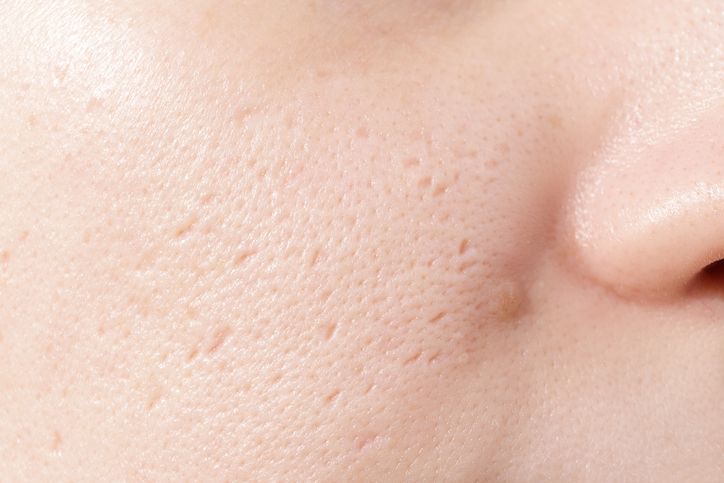Your acne is finally under control, but those leftover scars? They seem to be holding on for dear life. It’s frustrating. You try different creams, scrubs, even home remedies your cousin swore by but the marks are still there. Here’s the truth: acne scars don’t fade overnight, and not all products are created equal.
But there is hope. A few smart choices and a simple routine using the right ingredients can really make a difference. Dermatologists agree that consistency, gentle exfoliation, and the right scar-targeting products are key. And yes, you don’t have to spend a fortune or go under a laser to see results. Let’s break down an easy routine that works with the right products.
Start With Gentle Exfoliation
Before your skin can absorb any of the good stuff, you need to clear away the dead skin cells sitting on the surface. That’s where an exfoliating toner comes in. Exfoliating toners with ingredients like salicylic acid or glycolic acid gently remove the dull top layer of skin. They unclog pores, smooth rough texture, and help fade discoloration over time. These acids also encourage your skin to renew itself faster, which is essential for healing scars.
Don’t overdo it. Use the toner 2-3 times a week if you’re just starting out. If you have sensitive skin, start with once a week. Over-exfoliating can make your skin red and irritated, which can actually make scars worse. Look for toners that mention salicylic acid, AHAs (like glycolic or lactic acid), or PHA for gentler exfoliation.
Niacinamide Serum Is Your Best Friend
Once your skin is prepped, it’s time to treat. Enter niacinamide, a form of vitamin B3 that’s like a multitasker for your skin. It fades dark spots, reduces redness, evens out texture, minimizes open pores, and even helps control oil production. Niacinamide also supports your skin barrier, which is often damaged in acne-prone skin. When the barrier is healthy, the skin heals faster and looks smoother.
Apply 2-3 drops of a niacinamide serum every morning and night after toning and before moisturizing. If you’re using it for the first time, start slowly (once a day) and build up. It plays well with most ingredients, so it’s easy to fit into any routine.
Spot Creams That Fade Scars
Sometimes, you need to target stubborn spots directly. That’s where scar-fading creams and serums come in. Look for ingredients like retinoids, alpha arbutin, vitamin C, or azelaic acid. These help boost cell turnover, brighten discoloration, and gradually reduce the depth and appearance of scars.
- Retinoids: (like retinol or adapalene) are especially good for atrophic scars (the indented kind) because they stimulate collagen production. But if you’re new to them, start slow—use a small amount at night, 2-3 times a week. They can be irritating at first.
- Vitamin C: is excellent for fading dark spots and helps with post-inflammatory hyperpigmentation, especially in deeper skin tones.
- Azelaic Acid Serum: is another great option. It not only fades acne marks but also calms redness, evens skin tone, and has antibacterial properties—making it ideal for post-acne recovery.
The key is patience. Don’t expect miracles in a week. But with consistent use over a few months, you’ll start to notice brighter, smoother skin.
Hydration Is a Must
Scarred skin is usually stressed skin. That’s why keeping your skin well-moisturized is so important. A good moisturizer locks in the benefits of your treatments and helps your skin heal better. Look for moisturizers that are lightweight but hydrating ones with hyaluronic acid, ceramides, or glycerin. They won’t clog your pores and will keep the skin soft and calm.
Apply moisturizer after your serum and spot treatments. It seals everything in and protects your skin from drying out, especially if you’re using actives like acids or retinoids.
Sun Protection = Non-Negotiable
The biggest mistake people make while treating scars? Skipping sunscreen. Sun exposure darkens scars and makes hyperpigmentation worse. It can even undo all the progress your routine has made. Use a broad-spectrum SPF 60 and PA+++ or higher every single day even when it's cloudy or you’re staying indoors. Apply a generous amount every morning, and reapply if you’re outside for more than 2 hours. Your skin will thank you.
Understand Your Scar Type
Not all acne scars are the same. Knowing which type you have can help you choose the best treatments:
-
 Boxcar scars: Wide with sharp edges. Respond well to exfoliation and resurfacing treatments.
Boxcar scars: Wide with sharp edges. Respond well to exfoliation and resurfacing treatments. -
 Ice pick scars: Deep and narrow. Harder to treat. You may need professional help like subcision or laser.
Ice pick scars: Deep and narrow. Harder to treat. You may need professional help like subcision or laser. -
 Rolling scars: Wide with sloping edges. Microneedling or fillers can help.
Rolling scars: Wide with sloping edges. Microneedling or fillers can help. -
 Raised scars: Thick and above the skin. Usually need steroid injections or specialized treatments.
Raised scars: Thick and above the skin. Usually need steroid injections or specialized treatments.
What Not To Do?
- Don’t pick or squeeze pimples. It causes more damage and leads to deeper scars.
- Don’t over-exfoliate. More isn’t better. Be gentle.
- Don’t try too many new products at once. Stick to your routine and give it time.
- Don’t skip sun protection. It’s essential for healing.
Give It Time, And Stick With It
There’s no overnight fix for acne scars. Anyone who tells you otherwise probably isn’t being honest. But the right routine can bring slow, steady results. Start simple: exfoliate gently, treat with niacinamide, apply scar-fading creams, moisturize well, and never skip sunscreen. You don’t have to live with acne scars forever. With a little consistency and the right products, your skin can look smoother, clearer, and more even-toned. Because your skin deserves to look as calm and confident as you feel.









